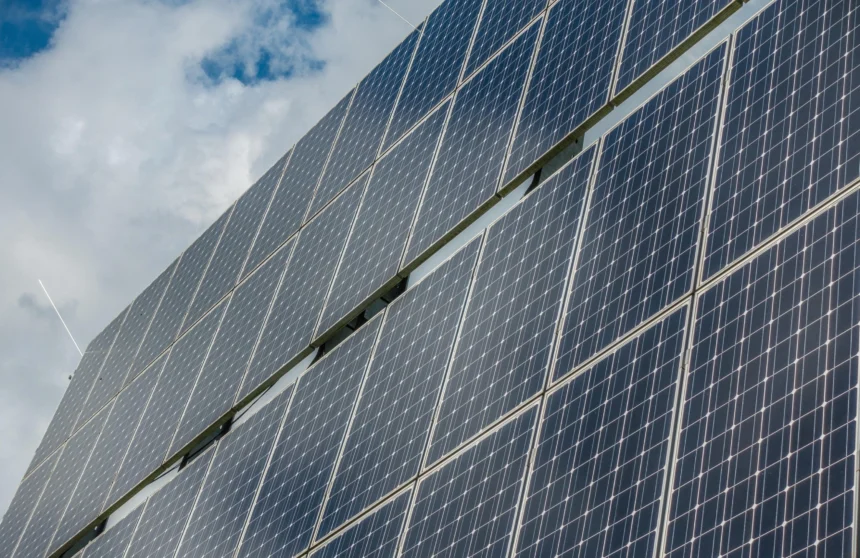For years, solar power felt like a lifeline for many Pakistanis. As electricity bills climbed and power cuts became routine more and more families and businesses started looking up—to the sun—for answers. Thanks to friendly policies and tax breaks, importing solar panels was affordable and installations boomed across cities and villages alike.
But in June 2025, that changed. According to PV Tech, as part of the new federal budget for 2025–26, the government announced something that sent a wave of concern through households and clean energy circles: an 18% General Sales Tax (GST) on imported solar panels.
The plan, they said, was to encourage local manufacturing and expand the tax base. But for many it felt like a step back. “The 18 percent on top of 46% was an additional burden”
The response was swift. Consumers, especially those who had scraped together savings to install solar panels, felt blindsided. Environmental groups, energy experts and even solar companies raised red flags. Would this new tax price people out of going green?
The issue gained so much attention that it reached Pakistan’s top political platforms. Both the National Assembly and Senate Finance Committees reviewed the backlash. The committees agreed—this 18% GST would hit too hard, too fast.
In the end, Deputy Prime Minister Ishaq Dar addressed the nation’s concerns. “The 18 percent on top of 46% was an additional burden. So, regarding this, after consultations and deliberations, we have decided that this year we will keep a 10% sales tax and not 18%,” he said as reported by Dawn.com.
It wasn’t a complete rollback, but it was a shift. A compromise.
The Cost of Clean Energy Just Went Up
Starting July 1, 2025, imported solar panels now carry a 10% GST. According to estimates from solar distributors and installers this could mean a price hike of 8–10% on full solar power systems. That may not sound massive at first, but for middle-income families saving every rupee, it’s a real barrier.
“Pakistanis have turned to solar because the grid is unreliable, and power costs just keep rising,” said Waqas Moosa, Chairman of the Pakistan Solar Association (PSA). In an interview with TheNews.com.pk he added, “At a time when the global shift toward renewable energy is accelerating, this tax risks discouraging solar adoption and undermining our climate and energy goals.”
And he’s not alone in that worry.
Still, many experts think people will continue to go solar—because frankly, they don’t have much choice. Power breakdowns are still a regular part of life. Electricity from the grid keeps getting more expensive. So even if panels cost more upfront solar still makes financial sense for the long run.
A Push for Local Panels
Behind the scenes, the government says the new tax is also meant to boost local solar manufacturing. It’s a noble goal—why not make panels at home instead of relying on imports from China, Germany or the U.S.?
But there’s a catch.
Pakistan’s current solar production industry is small and can’t meet the demand, especially not for the high-efficiency panels people prefer. Most local manufacturers make lower-wattage panels which don’t perform as well and aren’t cost-effective for large systems.
Muhammad Zakar Ali, CEO of Inverex Solar Energy, told Business Recorder, “Pakistan requires a minimum of 18-24 months to establish a viable local industry capable of producing clean energy equipment at scale.” He warned that applying the tax before developing that infrastructure might backfire—pushing away investors, both local and foreign.
It’s a classic chicken-and-egg dilemma: the government wants to boost production by taxing imports, but without a mature local market the plan could stall progress instead of speeding it up.
A Break from the Past
This new policy marks a major shift from how things used to work. For years, solar panel imports were either tax-free or lightly taxed, thanks to special SROs (Statutory Regulatory Orders) issued by the Federal Board of Revenue (FBR). These exemptions were part of the Alternative and Renewable Energy Policy, 2019—crafted to help Pakistan meet its global climate promises, especially under the Paris Agreement.
The idea back then was simple: make solar easy and cheap, so more people switch.
But now, even after public and parliamentary resistance the 10% GST remains. It’s clear the government is aiming for a more structured tax system and more revenue—even if that means asking the solar sector to carry some of the load.
And that shift brings uncertainty.
So, What Happens Next?
The real test will be in the coming months. Will families still be able to afford solar systems with the price bump? Will businesses slow down their solar investments? Or will the demand stay strong enough to push through this financial roadblock?
There’s also the big-picture question: Will Pakistan follow through on building a strong local solar industry, or will the tax come too soon—hurting growth before that industry is ready?
Right now, what’s certain is this: the conversation around clean energy in Pakistan isn’t going away. People are watching, they’re debating, questioning and hoping for policies that match the urgency of our climate and energy challenges.
And while this new GST might not be the end of solar’s rise in Pakistan it is a turning point—one that will shape the road ahead.




